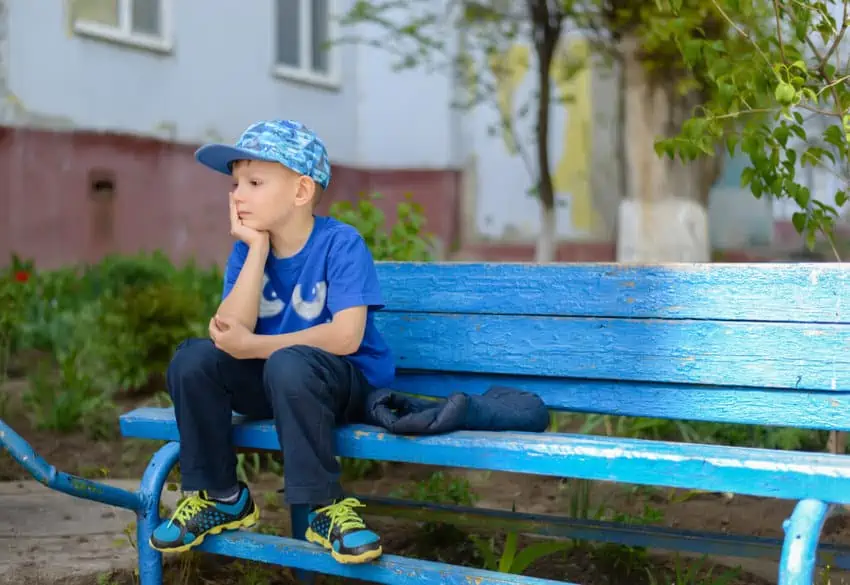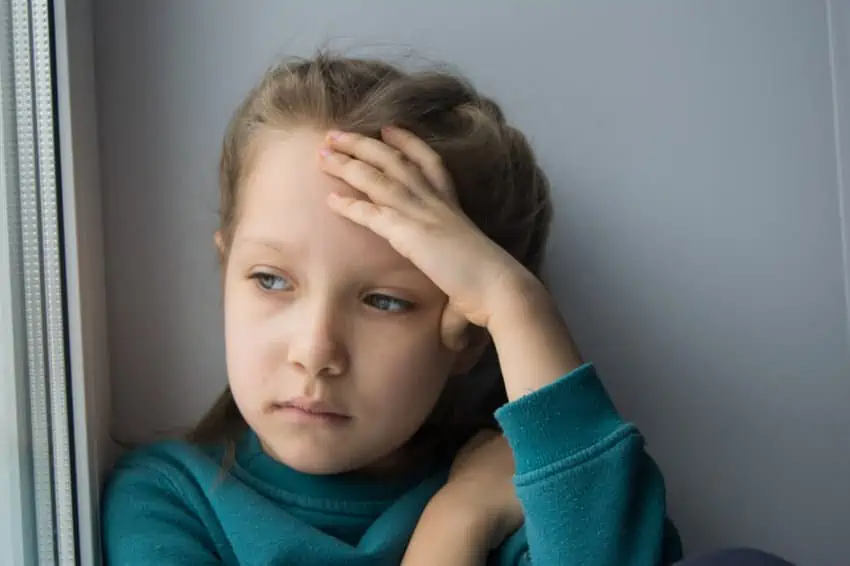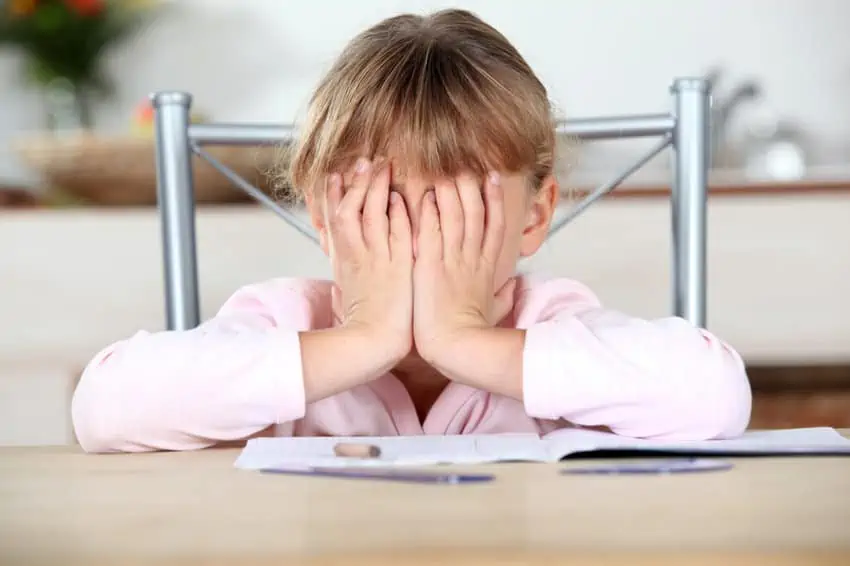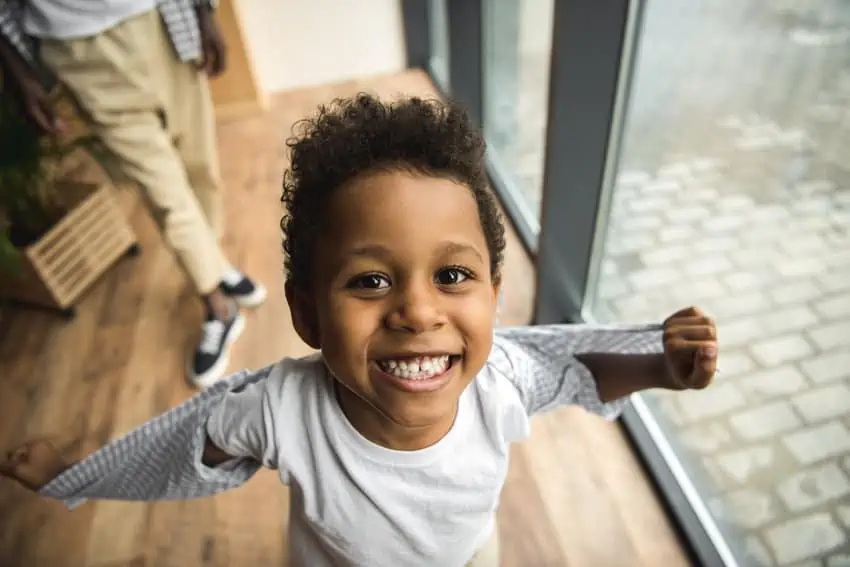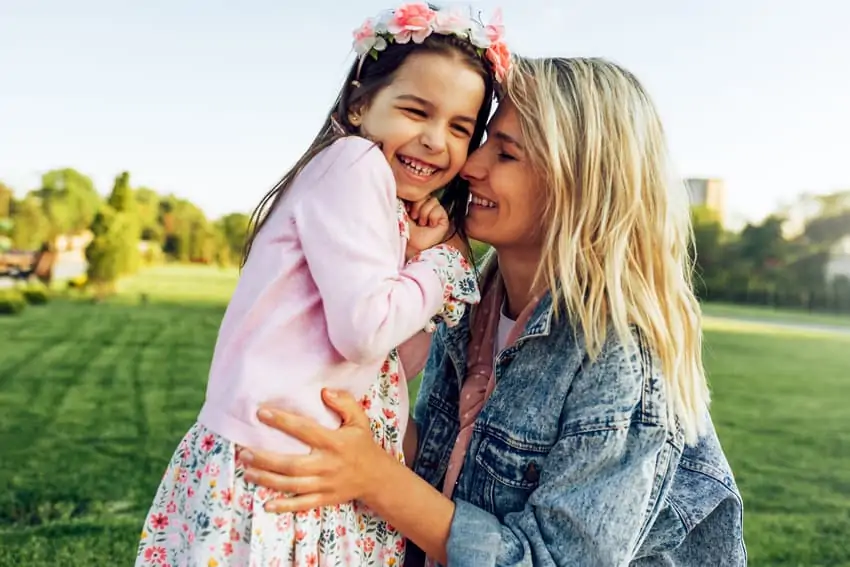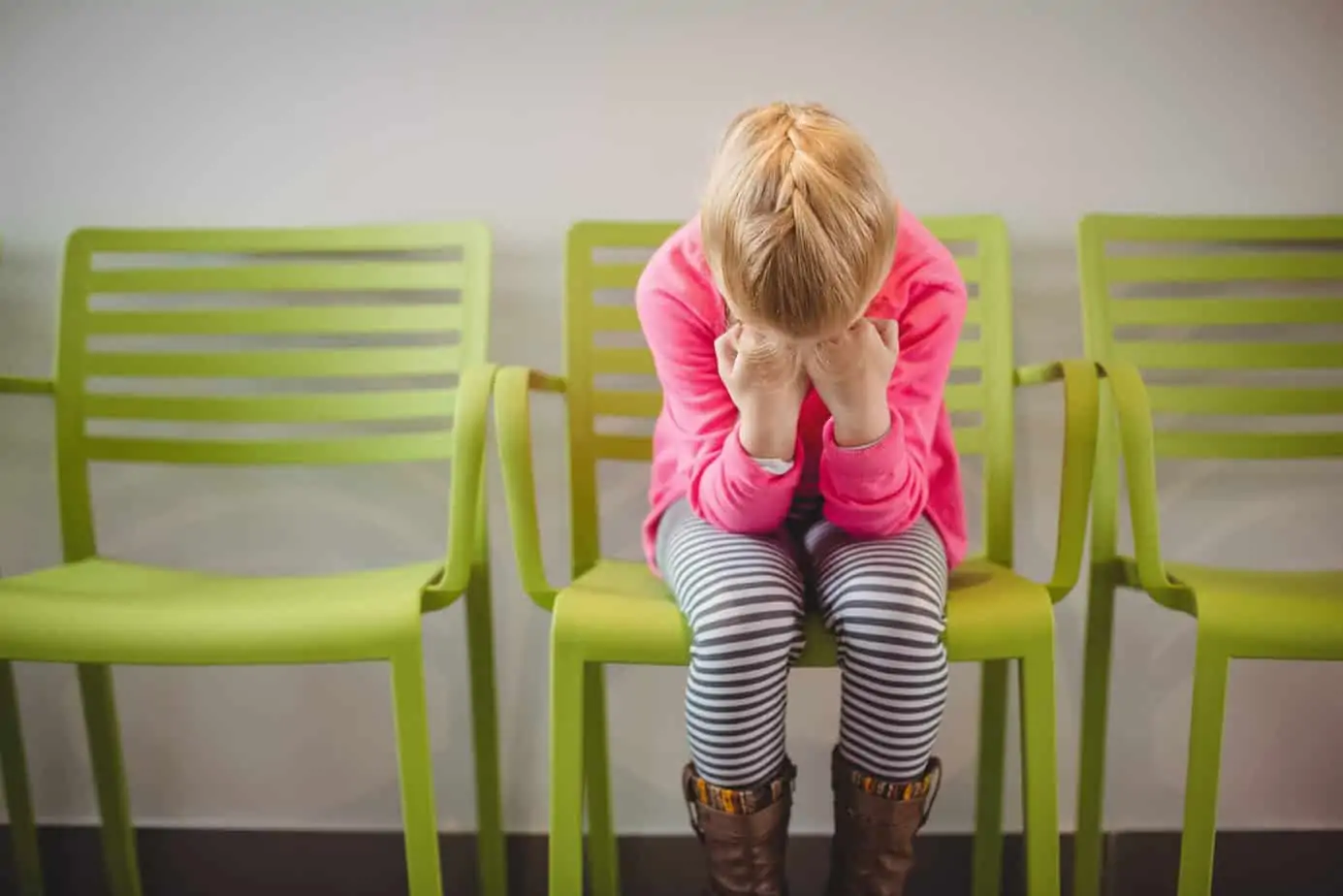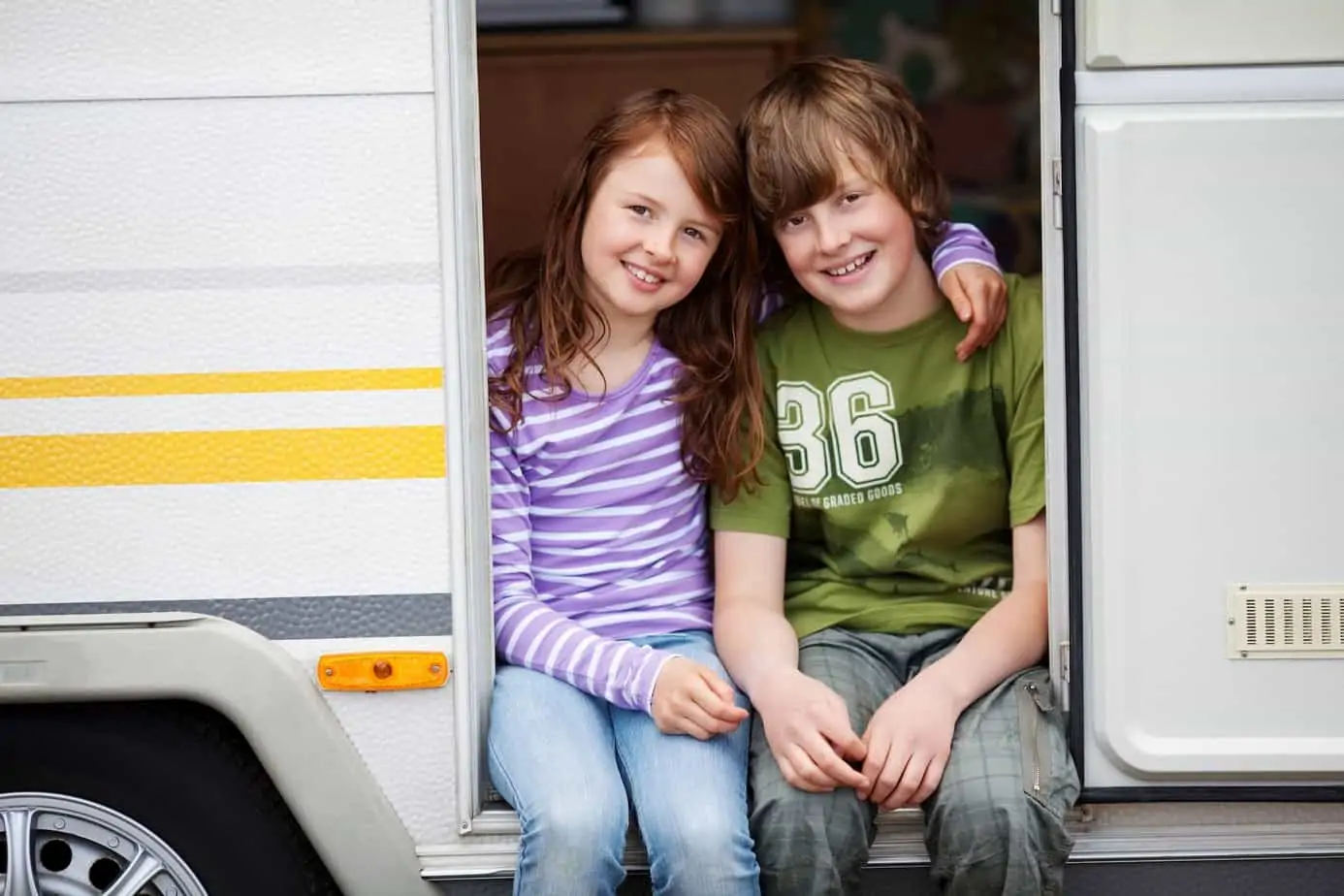Learn how to help children with anxiety so that they can overcome feelings of being uncomfortable and everyday challenges in life! Check out the emotions identification toolkit to help kids dive deep into their feelings and emotions and uncover what’s going on under the surface and feel confident to communicate these revelations.
A concern that every parent will have at some point is how to help children with anxiety. Although it’s not one of the fun emotions to have, it remains a very common feeling that kids and adults experience. In fact, it is one of the most common childhood psychiatric conditions. In the US, 9.4% of children aged 3-17 years old have been diagnosed with anxiety!
Kids become anxious about many things.
Getting lost.
A lightning strike.
Fitting in.
Getting a needle.
Spiders!
Every day, there are anxieties to overcome, and they look very different for each kid. Some might feel nauseous or have butterflies in their stomach. Others get headaches, and some even experience panic attacks.
As a parent, it’s very difficult to watch your children in distress. While you can’t eliminate it altogether, you can assist anxious kids by helping them manage this overwhelming emotion. Children can put in plenty of work when it comes to overcoming anxieties, but proper parenting and handling of the situation is often more critical in raising resilient kids.
These methods below will teach you how to help children with anxiety in a way that allows you to listen to them and help them without overprotecting your child.
What Creates Anxious Kids?
Understanding anxiety yourself is one of the first steps in learning how to help children with anxiety. There are many reasons why kids have anxiety, and it will differ greatly based on their age. For instance, it’s common for infants to experience separation anxiety as early as six months old.
Young children will experience common worries like:
- Sleeping in the dark
- Interacting with strangers
- Large and loud animals like dogs
- Even monsters under the bed!
As kids get older, they begin to worry about things like fitting in at school, finding friends, or speaking in class.
These situations are common and, yes, uncomfortable. It’s important to identify the difference between harmful and uncomfortable situations.
Harmful situations need immediate attention and help from parents. Uncomfortable situations are part of life and a vital teaching moment for children.
Check out the emotions identification toolkit to help kids dive deep into their feelings and emotions and uncover what’s going on under the surface and feel confident to communicate these revelations.
What to Say to Children with Anxiety
When a child first talks about their anxiety or a specific situation, begin by just talking about what they’re experiencing before you jump to any kind of solution.
Are they able to identify this feeling as anxiety? If this is something new to your child, a good starting point may be discussing what anxiety is. Walk them through their emotions so they can identify them the next time it happens to them.
It’s also a good idea to discuss what’s triggering this anxiety. How do they know they are anxious? What does it feel like? Anxiety can manifest in many ways depending on the child.
Ask them to explain their physical symptoms of anxiety as well as their direct concerns. You need to know exactly what thoughts they had to lead them to feel this way.
Talking it all through is a vital step in working with anxiety. The key is not to get rid of the anxiety but to teach them that anxiety is tolerable and manageable!
Validate Their Feelings
After a child has discussed their anxiety, tell them that it’s okay that they are feeling this way. Even if it feels like a small problem to you, it’s clearly a big issue for them. We all have anxieties about feeling uncomfortable, even for a moment.
Confronting any kind of fear creates anxiety. Your child needs to know that it’s completely normal to feel this way. This will also make them more likely to share future anxieties with you knowing that you’ve created a safe place for them to express their feelings.
If children need help identifying and expressing emotions, emotion picture cards are a must-have tool!
Pay Attention to Your own Behavior
As a parent, you’re key not only in helping a child manage anxiety but in preventing it as well. Many parents ask simple questions like “Do you have everything you need?” or “Did you study enough for your test?”
With questions like these, we think we’re helping them. In reality, we’re making them more anxious by having them question themselves and their actions. Avoid asking questions that could make a child feel more anxious.
In addition, you can also talk about your own feelings when you feel stressed, worried, or anxious. Role modeling how to deal with anxiety will teach your kids how to cope with these feelings even when it’s not directly affecting them. Voice these feelings aloud and show them how you’re dealing with them.
Avoid Reassuring Them
Perhaps one of the most difficult ways to help children with anxiety, knowing when to step back is also one of the most important ones.
So many parents wonder, “How can I help my child stop worrying?” but that already implies the parent does most of the work. As parents, it’s never fun to see your child upset. The first thing we want to do is comfort them and try to make them feel better.
In reality, comforting them can lead to worsening anxiety. When parents give in and make too many accommodations, they’re allowing the child to escape these challenges. Kids who don’t take risks and engage with their challenges will never learn vital coping and problem-solving skills.
Kids will always ask questions and come to you for reassurance!
When this happens, work to be mindful of the moment. What is the situation? Is there a true risk for the child?
Assess whether your child is in true danger and needs help or if they can solve this on their own. For instance, having no one to eat with at lunch is something you can encourage your child to work through by asking to sit with someone. Meanwhile, a child being bullied is a moment to intervene.
Ask yourself in the moments what you want your child to learn from this experience. You want to help set up the child so that they can deal with the situation themselves.
Work on Problem-Solving
Problem-solving is what you’re always trying to help anxious kids learn. Ideally, in each situation, you want to assist an anxious kid in confronting their own fears and finding the solution. This way, they are more likely to create their own coping mechanisms for managing anxiety, such as:
- Self-soothing
- Resolving problems with others
- Delayed gratification
- Belief in one’s self
If you solve every issue for them, their confidence will degrade, and anxieties will increase in frequency and severity. These kids will become incapable of managing situations and will always need help from someone.
When leading kids towards problem-solving, focus on the positives. Remind them of when a similar situation worked out in the past.
For anxious moments when the emotions are overwhelming, you can also teach kids coping exercises like mindfulness and breathing.
Raise Independent Kids
When kids think that their parents will always be at their beck and call, they’re in for a harsh reality as they get older. They will always rely on others for support and feel let down when they don’t always get it.
Raising independent kids is a major part of avoiding anxious adults!
Independent kids learn how to conquer challenges on their own and that they are capable of their own abilities, life, and even emotions. Besides having them work out their anxieties on their own (or with assistance), let them do things on their own around the house.
Create a routine, let them be a part of decision-making, and allow them to do their own things!
When it’s Time to Seek Additional Help
As a parent, there is only so much you can do to help your kid with anxiety. When left untreated, serious anxiety can lead to depression and substance abuse as children turn into young adults.
If a child’s anxiety rises in frequency, this could be a cause for concern. Daily occurrences of anxiety imply a larger problem at play.
Also, look at the intensity of the fear. Is it reasonable for them to have this fear? If the fear is repeatedly about things they’ve done before or things they shouldn’t be anxious about, it’s time to seek help.
Anxiety should also not interfere with everyday activities. If it begins to affect their school, home life, or social life, it may be a cause for concern.
The first point of call for kids with anxiety should be their general practitioner. They can help determine the severity of the anxiety and may recommend your child to see a psychologist or refer you to more services.
The Takeaway
Learning how to help children with anxiety takes time and patience as a parent. First, you need to listen and validate their feelings. Talk it out with them, so you and your child know how and why they are feeling this way. Then, encourage them to find a solution to the problem.
Dealing with anxiety and other big emotions is a big part of being a parent…and a tricky one at that. Be sure to check out my other posts on dealing with big emotions, as well as my resource section for parents and kids.
Related & Helpful Articles for Big Emotions
- 7 Signs Your Child Needs a Mental Health Day to Recharge
- How Parenting Behavior Influences Kid’s Positive (& Negative) Behavior
- How to Meet the Core Emotional Needs of a Child
- Teaching Feelings & 6 Steps to Help Kids Express Their Emotions
- How to Respond to Your Child’s Negative Self Talk & When They Want to Give Up
Want even more?
Shop All Parenting Resources
Shop all of our parenting resources from self-regulation tools and managing big emotions to building self esteem and confidence. There are resources for all seasons of life!
